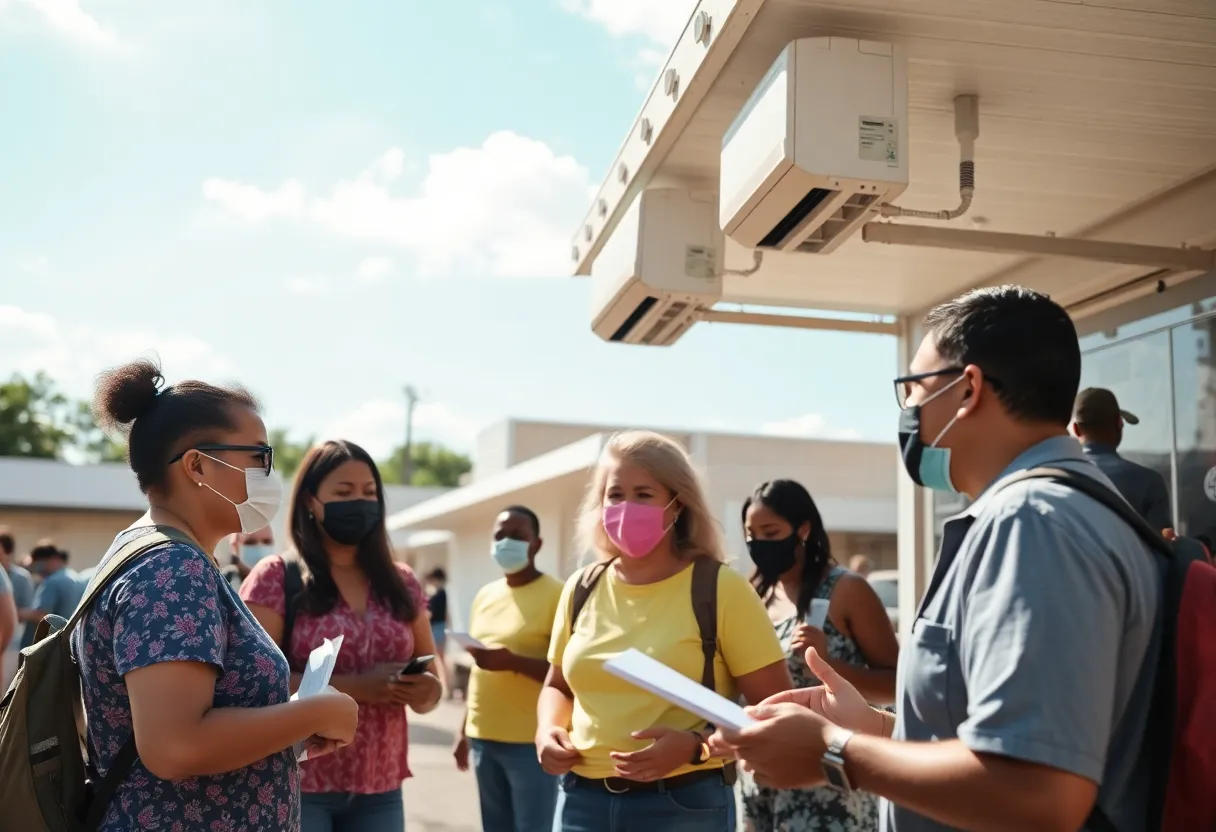News Summary
The death of 82-year-old Kate Korman due to heat exposure in Arizona has raised concerns about utility disconnections during extreme temperatures. With rising heat-related fatalities, advocates are calling for better protections for vulnerable populations, especially the elderly and low-income families. The state has seen 15 indoor heat-related deaths in 2024, prompting discussions on federal funding cuts and the need for immediate action to prevent further tragedies. The Arizona Corporation Commission has implemented moratoriums on power shutoffs during high-temperature months to safeguard residents.
Arizona authorities are grappling with the consequences of utility disconnections amid extreme heat following the death of an elderly woman who succumbed to heat exposure in her home. The victim, Kate Korman, 82, was found deceased on May 13, 2024, inside her Sun City residence after her electricity had been shut off due to missed payments. This tragic incident has sparked advocacy from family members and lawmakers regarding the systemic issues affecting vulnerable populations reliant on air conditioning for safety during oppressive heat waves.
Kate Korman’s family reported that her electricity was cut off after Arizona Public Service (APS) made ten unsuccessful attempts to contact her regarding unpaid bills that had not been settled since January 2024. Jonathan Korman, her son, revealed that she died “baking in the heat” due to the lack of air conditioning, marking her death as one of many heat-related fatalities troubling the county. In 2024 alone, at least 15 of the over 100 heat-related deaths recorded in Maricopa County occurred indoors, highlighting a significant concern for public health.
Nearly 70% of those heat-related deaths involved households that had air conditioning units but were unable to operate them due to power disconnections. The ongoing pattern of vulnerable populations, especially the elderly, facing life-threatening situations during extreme heat without access to cooling solutions has raised alarms. This issue has been further exacerbated by cuts to federal assistance programs, such as the Low-Income Home Energy Assistance Program (LIHEAP), which helps low-income families manage their utility bills.
Recent reductions in federal funding for LIHEAP, alongside the termination of the staff responsible for distributing these funds, have fueled concerns among state leaders regarding the implications for vulnerable communities. Lawmakers, particularly Democratic state representatives, have vocalized their worries about the rising numbers of heat-related deaths amid these aid cuts. They emphasize the necessity of protecting vulnerable individuals, including seniors and single parents who rely on such programs to ensure their homes remain livable during the harsh summer months.
Arizona Public Service (APS) does have existing assistance programs for those struggling to pay their bills. However, with the federal funding cuts creating an environment of uncertainty and potential inaccessibility to aid, community advocates warn that many individuals may not receive the help they need. Jonathan Korman has drawn attention to the recurring theme of heat-related deaths resulting from utility shutoffs, suggesting a systemic issue that demands a reassessment of current policies to safeguard at-risk residents.
This alarming situation has drawn parallels to previous cases of unaddressed power shutoffs leading to fatalities. In 2018, the tragic death of Stephanie Pullman also drew public scrutiny and prompted calls for changes that protect residents from forced disconnections during extreme temperatures. Following this string of incidents, Maricopa County officials noted at least 18 confirmed heat-related deaths recorded by mid-July in 2023, underscoring the need for swift action and intervention.
In response to these preventable deaths, the Arizona Corporation Commission has instituted moratoriums on power shutoffs during high-temperature months in an effort to protect vulnerable residents from similar fates. Meanwhile, local governments and nonprofit organizations are intensifying their outreach efforts, providing utility assistance, air conditioning repairs, and replacements to those affected.
Awareness of the dangers posed by extreme heat, especially for isolated older adults living alone, is slowly increasing. As government entities and social organizations work to address the urgent needs of vulnerable communities, advocates emphasize that without consistent and reliable access to cooling resources, lives may continue to be at risk as temperatures rise.
Deeper Dive: News & Info About This Topic
- AZ Family
- Wikipedia: Utility Shutoff
- Gilbert Sun News
- Google Search: Power Shutoffs
- AP News
- Google Scholar: Extreme Heat and Utility Shutoffs
- Washington Post
- Encyclopedia Britannica: Extreme Heat in Arizona
- Vox
- Google News: Arizona Public Service

Author: STAFF HERE PHOENIX WRITER
The PHOENIX STAFF WRITER represents the experienced team at HEREPhoenix.com, your go-to source for actionable local news and information in Phoenix, Maricopa County, and beyond. Specializing in "news you can use," we cover essential topics like product reviews for personal and business needs, local business directories, politics, real estate trends, neighborhood insights, and state news affecting the area—with deep expertise drawn from years of dedicated reporting and strong community input, including local press releases and business updates. We deliver top reporting on high-value events such as the Waste Management Phoenix Open, Cactus League Spring Training, and Arizona State Fair. Our coverage extends to key organizations like the Greater Phoenix Chamber of Commerce and Visit Phoenix, plus leading businesses in technology and healthcare that power the local economy such as Intel and Banner Health. As part of the broader HERE network, including HERETucson.com, we provide comprehensive, credible insights into Arizona's dynamic landscape.





